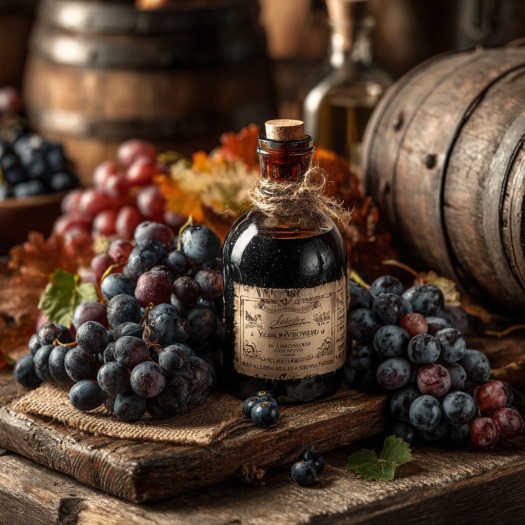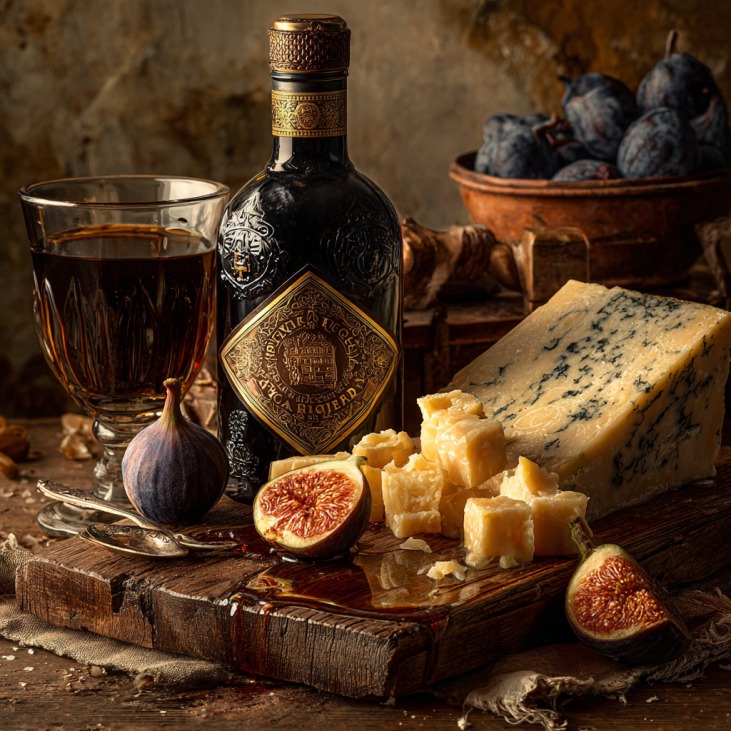Balsamic vinegar of Modena is one of Italy’s most precious gastronomic treasures, and in particular of Emilia Romagna – a product that unites history, territory, and artisanal mastery. Born centuries ago, in Modenese families and handed down as a highly valued possession, it is now recognised worldwide for its aromatic richness and the harmony of flavour that distinguishes it.
Every phase of its production, from the grape harvest to the slow ageing in barrels of different woods, reflects an ancient knowledge that is still carefully respected today. More than a condiment, balsamic vinegar is a living testimony of Emilian tradition, capable of transforming cuisine into an experience of culture and identity.
Historical Roots and Cultural Value
The history of balsamic vinegar of Modena is deeply intertwined with that of Emilian families who, over the centuries, have guarded the secret of its production as a treasured asset. As early as the Middle Ages, it was considered a noble and prestigious product, used not only in cuisine but also as a precious gift and, at times, as a natural remedy. Bottles of this “black gold” were often offered to dukes, emperors, and foreign courts as a sign of refinement and prestige.
Each generation passed down rituals and knowledge, ensuring that the craft remained alive. Even today, this long chain of care and tradition represents a fundamental part of local identity. In Emilia-Romagna, balsamic vinegar is not just a product; it is a heritage in liquid form.
The bond with the territory is equally significant. The typical microclimate of the Modenese plain, with its hot summers and cold winters, favours the slow maturation of the must. These temperature fluctuations allow natural evaporation, concentration, and the gradual creation of its signature flavours. It is precisely this combination of nature and human craftsmanship that makes balsamic vinegar unique, a condiment capable of embodying the historical and gastronomic memory of the region.
Acetaia Leonardi: Modenese Excellence in a Bottle
Among the producers that best represent this tradition is Acetaia Leonardi, a historic farm located in Magreta di Formigine. For generations, the Leonardi family has personally overseen every stage of the production of balsamic vinegar of Modena, cultivating its own Trebbiano and Lambrusco grapes and maintaining a short supply chain that guarantees authenticity and complete quality control.
Inside the evocative Corte dei Campi Macri, the cooked must rests for years in barrels of different woods – oak, chestnut, cherry, and juniper. Each wood lends its own subtle character, while time brings the must to maturity, enriching it with intense aromas and a velvety density that distinguish Leonardi’s balsamic vinegars.
Beyond production, Acetaia Leonardi has also become a cultural destination. Guided tours, tastings, and immersive food-and-wine experiences offer visitors the chance to discover, step by step, the journey that transforms simple grape must into a refined and celebrated condiment. Here, the patience of artisans meets the curiosity of travellers, bridging tradition with modern appreciation.
Thanks to this approach, Acetaia Leonardi has established itself internationally as an ambassador of Modenese excellence, combining respect for the past with openness to the demands of global markets.
The Value of Balsamic Vinegar in the Cuisine of Yesterday and Today
Balsamic vinegar of Modena has proven itself capable of maintaining its strong bond with tradition while also adapting to the needs of contemporary cuisine. Once reserved for aristocratic tables or special gifts, it has now become an everyday ingredient, enriching both simple family meals and the refined creations of top chefs.
Its versatility is astonishing. It enhances the great classics of Emilian cuisine, such as Parmigiano Reggiano, roasted meats, and seasonal vegetables, but it also shines in more unexpected pairings. A drizzle over strawberries or figs, or even over creamy vanilla gelato, offers a surprising harmony of sweet and sour. In savoury dishes, a few drops elevate risottos, marinades, or grilled fish, providing depth without masking the natural flavour of the ingredients.
International chefs have embraced balsamic vinegar as a way to link tradition and innovation. From reductions and glazes to avant-garde presentations, it continues to inspire culinary creativity. Yet, in home kitchens, it remains a symbol of Italian authenticity – a small bottle with the power to transform everyday dishes into something memorable.
This dual soul – rooted in history yet open to modern interpretation – is what makes balsamic vinegar of Modena a true icon of Italian gastronomic culture, cherished on tables all over the world.
Conclusion
Balsamic vinegar of Modena is far more than a condiment. It is history in a bottle, the fruit of Emilia-Romagna’s land and climate, and the result of generations of artisanal dedication. From medieval gifts to modern kitchens, it has travelled through centuries while retaining its authentic soul.
Its richness of aroma and harmony of taste make it a treasure of Italian cuisine, a product that unites past and present, family and territory, tradition and innovation. To taste balsamic vinegar is to savour the essence of Emilia, and to celebrate one of the most enduring symbols of Italian tradition.



Leave a Reply